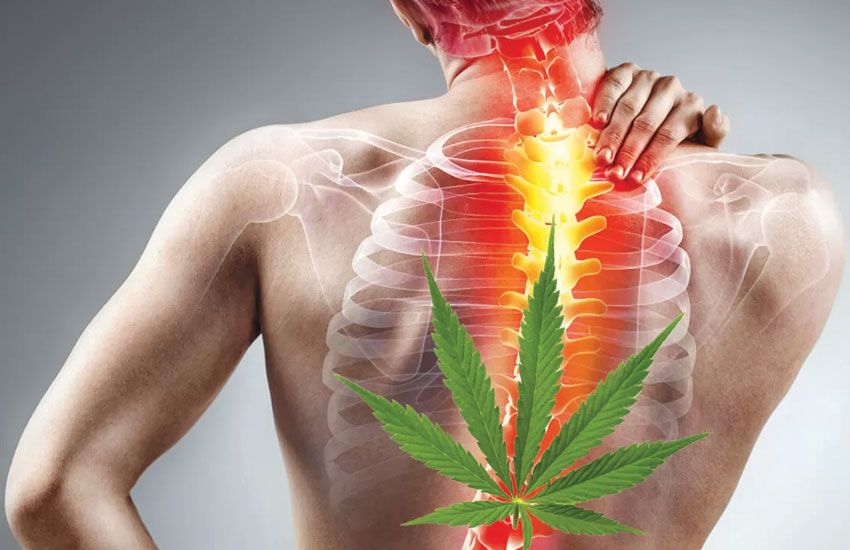The Best Cannabis Strains For Pain Relief – A Comprehensive Guide

With the growing popularity of cannabis for medicinal purposes, you may find yourself seeking effective solutions for your chronic pain. This guide aims to provide you with insightful information on the best cannabis strains tailored to alleviating discomfort. By understanding the unique properties of each strain, you can make informed decisions that support your well-being while effectively managing your pain. Get ready to explore the world of cannabis and discover the options that can enhance your quality of life.
Key Takeaways:
- Strain Selection: The effectiveness of cannabis for pain relief largely depends on choosing the right strain, with hybrids often offering a balance of indica and sativa effects.
- THC and CBD Ratios: Strains with a higher CBD content tend to provide pain relief with fewer psychoactive effects, making them suitable for daytime use.
- Consultation Recommended: Always consider consulting with a health professional before trying cannabis for pain management, especially if you have underlying health conditions or are on medications.
1. Indica strains are often preferred for pain relief.
2. High CBD strains provide effective pain management without psychoactivity.
3. Consult with a healthcare professional for personalized recommendations.
4. Strain effects can vary based on individual body chemistry.
5. Consider terpenes like myrcene and linalool for added benefits.
6. Start with low doses and gradually increase for comfort.
Understanding Pain and Its Types
The study of pain is imperative for understanding how it affects you. Pain can be classified into various types based on its duration and underlying causes. Here’s a breakdown of the different types:
| Type of Pain | Description |
|---|---|
| Acute Pain | Short-term pain that usually fades as healing occurs. |
| Chronic Pain | Pain that persists for weeks, months, or longer. |
| Neuropathic Pain | Pain caused by nerve damage or dysfunction. |
| Somatic Pain | Sharp pain from injury to skin, muscles, or bones. |
| Visceral Pain | Deep pain from internal organs, often hard to pinpoint. |
Assume that understanding these classifications can help you make informed decisions about your pain management strategies.
Acute vs. Chronic Pain
The distinction between acute and chronic pain is vital for your treatment plan. Acute pain is generally sharp and severe, serving as a warning signal that something is wrong, while chronic pain persists beyond the normal healing time and can lead to ongoing issues. Recognizing these differences helps you better communicate your experiences to healthcare providers and choose suitable therapies.
Neuropathic Pain
Pain that originates from nerve damage is known as neuropathic pain. This type of pain may manifest as burning, tingling, or shooting sensations. You might experience these symptoms due to various conditions, including diabetes, shingles, or even fibromyalgia. Understanding this type of pain is imperative in finding effective pain relief options tailored to your needs.
Types of neuropathic pain can range from mild to extremely severe. Common causes include injuries, infections, and underlying medical conditions. This pain can often be chronic and debilitating, affecting your daily activities and overall quality of life. A comprehensive understanding of your experience can lead you to effective treatment options, including medications, physical therapy, and potentially beneficial cannabis strains designed to alleviate your discomfort.
How Cannabis Provides Pain Relief
Assuming you are exploring options for pain management, it’s imperative to understand how cannabis can play a role in alleviating your discomfort. Research indicates that certain cannabis strains can be effective in addressing chronic pain issues, as highlighted in this article on What are the best cannabis strains for chronic pain? By utilizing the plant’s natural compounds, many individuals report significant improvements in their conditions.
Cannabinoids and Their Effects
Their unique properties, such as THC and CBD, interact with your body’s receptors, helping to reduce inflammation and provide pain relief. THC is known for its psychoactive effects but also has analgesic properties. On the other hand, CBD offers therapeutic benefits without the high, making it a preferred choice for those seeking pain relief.
The Endocannabinoid System
Effects of cannabis on pain perception are significantly mediated by your endocannabinoid system, which regulates various physiological processes, including pain response. This intricate network of receptors and neurotransmitters helps maintain balance in your body, thus playing a crucial role in how you experience pain.
Cannabis acts on the endocannabinoid system by enhancing the body’s own ability to manage pain. It interacts with receptors located throughout your nervous system, which can lead to decreased pain sensitivity. The interplay between cannabinoids and your endocannabinoid system encourages not only pain relief but also reduction in anxiety and improved mood. However, you should be cautious, as excessive use can lead to potential side effects like dependence, highlighting the importance of responsible use.
Top Cannabis Strains for Pain Relief
Keep in mind that the effectiveness of cannabis for pain relief depends on the strain you choose. With numerous strains available, understanding their differences is important for benefiting from their medicinal properties. In this section, you’ll discover the top strains specifically known for alleviating pain, whether it’s chronic, neuropathic, or inflammation-related.
Indica Strains
Pain relief is often best achieved through Indica strains, known for their soothing and calming effects. These strains typically have higher levels of CBD, which can help reduce inflammation and discomfort. They may induce relaxation, making them ideal for nighttime use when you need help winding down and alleviating pain after a long day.
Sativa Strains
An important aspect of effective pain management is knowing when to use Sativa strains. While Indicas are great for relaxation, Sativas often provide a more uplifting experience. They tend to be energizing, making them suitable for daytime use without the heavy sedation that Indicas can cause. This can be particularly beneficial for individuals dealing with conditions such as fibromyalgia or chronic pain that may hinder daily activities.
Another key benefit of Sativa strains is their ability to stimulate mental clarity and focus, helping you remain productive throughout the day while still managing pain levels. Many users report that Sativas can combat pain effectively while uplifting mood and reducing anxiety, making them a versatile option for those in need of pain relief.
Hybrid Strains
An ideal choice for many, Hybrid strains combine the best of both Indica and Sativa worlds, allowing you to customize your pain relief experience. These strains can be fine-tuned to target specific symptoms based on their dominant genetics, offering a unique blend of uplifting and sedative effects depending on your needs.
Understanding Hybrid strains can empower you to tailor your pain relief strategy better. Some hybrids lean more towards Indica, providing strong relaxation, while others may favor Sativa characteristics for enhanced energy. This flexibility enables you to adjust your consumption according to your pain levels, time of day, and overall lifestyle preferences. Ultimately, the right hybrid can offer a balanced experience, addressing your pain while also maintaining your desired level of alertness and functionality.
Methods of Consumption
All cannabis strains can be consumed in various ways, each offering distinct benefits and experiences. Your choice of consumption method can significantly influence the onset and duration of pain relief. From inhalation to ingestion, understanding these methods will empower you to make informed decisions that best suit your lifestyle and needs.
Smoking and Vaping
Any seasoned cannabis user will tell you that smoking and vaping are two of the most popular methods for pain relief. Smoking joint, pipe, or bong delivers cannabinoids almost instantaneously, allowing for rapid pain alleviation. Alternatively, vaping offers a *healthier* option by reducing harmful byproducts associated with combustion while still providing quick effects through inhalation.
Edibles and Topicals
Vaping is not the only way to consume cannabis for pain relief. Edibles and topicals provide you with alternative options that may suit your preferences. Edibles, such as gummies and brownies, deliver a *long-lasting*, potent effect due to the way your body metabolizes cannabinoids. However, the onset time is *slower*—taking anywhere from 30 minutes to 2 hours. Topicals like balms and lotions allow you to apply cannabis directly to painful areas without the psychoactive effects, making them ideal for localized pain relief.
Plus, you should note that while edibles offer a fun and discreet way to medicate, they can pose risks if consumed in excess. Always start with a low dose and wait patiently for the effects before taking more, as overdosing can lead to uncomfortable experiences. Additionally, topicals can provide immediate relief without causing any *high*, making them a versatile tool in your pain management regimen.
Dosage and Administration
To effectively manage pain with cannabis, it’s necessary to understand Discovering the Best Strains for Pain Relief involves careful consideration of dosage and administration methods. Individual tolerance and response can vary significantly, which makes it crucial to start with a low dose and gradually adjust until you find what works best for your needs.
Finding the Right Dosage
With cannabis, finding the appropriate dosage is key to achieving optimal pain relief. Begin with a small dose, especially if you are new to cannabis, and monitor how your body reacts. Keep in mind that potency varies between strains and methods of consumption, so it’s vital to adjust accordingly. Always consult a healthcare professional if you are unsure.
Tips for Consumption
Finding the right method of consumption can significantly impact your overall experience. Here are some tips to consider:
-
- Consider using edibles for longer-lasting effects.
- Try vaporizers for quicker relief without harmful smoke.
- Experiment with tinctures for precise dosing.
- Use topicals for localized pain relief.
After exploring these options, you can determine the best method tailored to your specific needs.
Right now, focusing on these consumption tips can greatly improve your experience:
-
-
- Start with low doses to gauge your body’s response.
- Keep track of effects to help adjust your intake.
- Stay hydrated and maintain a nutritious diet to support your cannabis use.
- Consult with a healthcare professional if needed.
-
After implementing these tips, you’ll be better equipped to manage your pain effectively while ensuring a safe and enjoyable experience.

Legal Considerations and Recommendations
Your journey into using cannabis for pain relief must include a thorough understanding of the legal landscape surrounding it. Laws regarding cannabis vary greatly from state to state and even within local jurisdictions, so it’s crucial to familiarize yourself with the regulations that apply in your area. This ensures not only compliance but also safe access to beneficial strains for pain management.
Understanding Local Laws
For individuals seeking to use cannabis for pain relief, it’s necessary to understand your local laws. Some regions may have legalized medical marijuana, while others might only permit it for recreational use or not at all. Be sure to research the specific guidelines, including possession limits and where you can legally obtain cannabis products.
Consulting Healthcare Professionals
Legal considerations extend to the importance of consulting healthcare professionals before incorporating cannabis into your pain management regimen. Medical professionals can provide invaluable insight into the effects of cannabis, potential drug interactions, and appropriate dosage, ensuring that you make informed decisions based on your individual health status. They can also help you navigate the legal aspects of using cannabis in a way that prioritizes your safety and wellbeing.
Healthcare providers can serve as a vital resource in your exploration of cannabis for pain relief. They are equipped to discuss potential benefits as well as risks associated with cannabis use. Additionally, they can assist you in finding the most suitable strains or products to alleviate pain while considering any pre-existing conditions or treatments you may be undergoing. Prioritizing this step ensures a holistic approach to your health management.
Final Words
Following this comprehensive guide, you should now have a clearer understanding of the best cannabis strains for pain relief that may suit your needs. Recall, selecting the right strain involves considering your specific condition and personal preferences. For further insights, be sure to check out the Best Cannabis Strains For Chronic Pain In 2024. Your path to effective pain management with cannabis can significantly enhance your quality of life.
FAQ
Q: What are the most effective cannabis strains for pain relief?
A: In the matter of pain relief, certain cannabis strains are particularly noted for their efficacy. Indica strains, such as Granddaddy Purple and Northern Lights, are highly regarded for their calming effects and ability to provide relief from chronic pain due to their high THC and CBD content. Sativa strains like Jack Herer and Sour Diesel may also offer relief, especially for conditions related to inflammation and headaches. Hybrid strains, such as Girl Scout Cookies, combine the effects of both indica and sativa, providing a well-rounded approach to pain management. It’s crucial to find a strain that works for your specific condition, and consulting with a healthcare professional knowledgeable in cannabis is advisable.
Q: How do I determine the right strain and dosage for my pain?
A: Determining the right strain and dosage for pain management involves several factors, including the type of pain (acute or chronic), personal tolerance to THC, and your individual body chemistry. Start with a low dose of a strain tailored for pain relief, such as high-CBD options for milder effects or higher THC strains for more severe pain. It’s recommended to keep a journal to track which strain and dosage work best for you and to gradually increase the dosage based on your body’s response. Consulting with a medical professional or a licensed dispensary can also provide personalized guidance to find an effective pain management plan.
Q: Are there any side effects associated with using cannabis for pain relief?
A: Yes, while cannabis can be an effective pain management tool, it may also have side effects. Common side effects include dry mouth, dizziness, altered mental state, and fatigue. Higher doses of THC can lead to anxiety or paranoia in some individuals. To minimize side effects, it’s vital to start with low doses, especially if you are new to cannabis. Additionally, the method of consumption (smoking, edibles, or oils) can affect both efficacy and side effects. Always consult with a healthcare provider to discuss potential side effects and how to manage them while using cannabis for pain relief.














